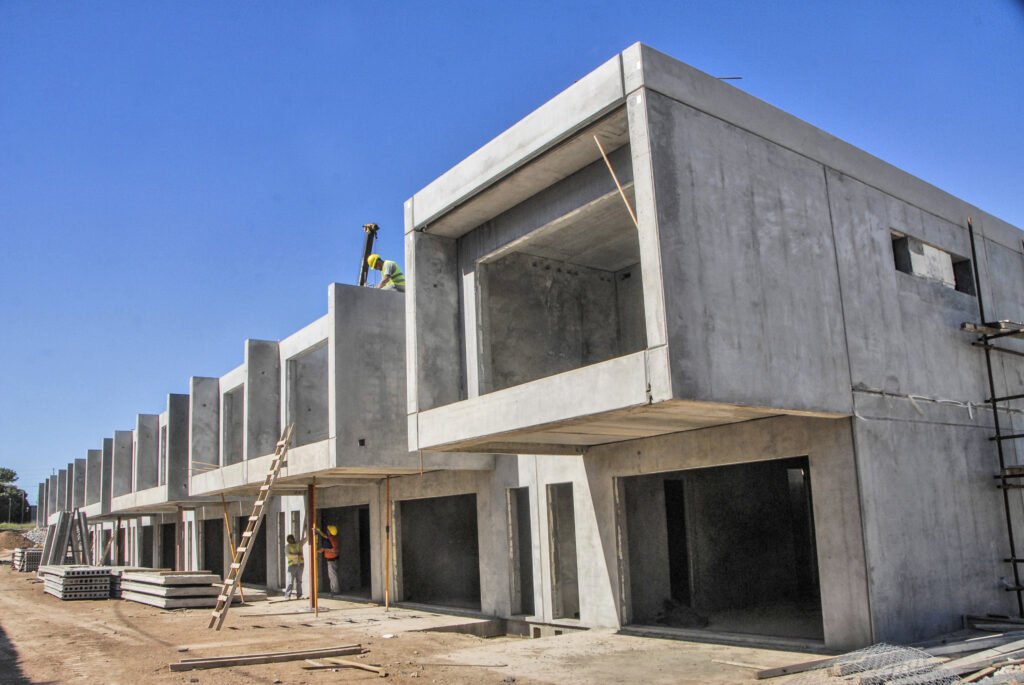The economic and monetary crises that have marred Argentina for years make the inflation and interest rates soar. Along with heavy restrictions on import, this puts a damper on the ability and eagerness to investment in the Southern American country. Lack of skilled labor and a constant power struggle between contractors and unions add to the difficulties. The construction industry is naturally affected by the situation, but investment in infrastructure and buildings has not stopped entirely.
Risky investments
“The situation is weird,” characterizes Mauno Mäntykoski, director of Mauber Machinery, the current state of affairs in Argentina.
Mäntykoski, who is Elematic’s agent in the region, experiences plenty of interest in buying precast technology. “People in the industry understand that something needs to be done to speed up construction. When investment is almost non-existing and loans extremely expensive, construction companies want fast results to get money fast,” he says.
Regardless of this realization, most companies in the end have to say to Mäntykoski, “not today, it’s too risky.”
The construction firm OCSA and its precast partner Astori were, however, ready to take a risk and invest in a precast plant from Elematic. Initially, they wanted to install a big sandwich wall plant, but the country’s economic troubles forced a change of plans. Now, a small plant with five tables has been installed – with the hope to enlarge with five more when the situation allows it. A scenario very saying of Argentina today.
Shaking the foundation of an industry
Astori’s new precast facility is the first Elematic sandwich wall plant in Argentina. With modern precast technology, OCSA and Astori hope to shake the entire idea of what it means to build in Argentina. So far, the industry has been “very traditional,” as Natalia Larocca, Director of Entrepreneurship and Projects at OCSA, puts it.
“In Latin America, precast is usually used for bridges and in big infrastructure projects, and it’s associated with low quality. Using precast technology for residential construction is new to us,” she explains.
When she visited Finland four years ago, she saw how long-lasting, high-quality, and even beautiful, buildings for any purpose can come out of concrete elements.
Larocca acknowledges that there are huge historical, cultural, and economic differences between Northern Europe and Latin America. “In Finland, they started 60 years ago. We are only just at the beginning.”
Precast could, however, be the answer to some of the big problems that Argentina is facing. The country has an urgent need for affordable housing, and a fast and cost-efficient technology that does not demand too much labor is exactly what is needed to solve that problem, Larocca deems.
Rapid growth and cultural objections
Albert Touris and Enrique Kenny from the independent Argentinian precast consultancy firm CATEK reckon that modern precast concrete technology has a lot to offer builders in the country. They list constructability, reduction of execution time, and quality as the main benefits.
Santiago Pica, director of the 120-year-old Argentinian construction industry publication, El Constructor, agrees. “Undoubtedly the most remarkable thing is the reduction of time for construction. And since it is an automated process, human errors are reduced,” he points out.
Pica estimates that about 5 percent of construction in Argentina is carried out using precast, but the share of precast is growing, he says. “The increase is very rapid, and I have no doubt that it will continue to grow. The main challenge is to install the modality in a massive way, so that it can compete on equal terms with traditional construction.”
Pica has visited Astori’s new plant in Gral. Rodríguez, Greater Buenos Aires, and is convinced that the Finnish sandwich wall technology has a bright future in Argentina.
“They are pioneers in this system,” he notes, adding that “Astori and OCSA will soon be suppliers to many other companies in the construction sector.”
Touris and Kenny from CATEK mention cultural objections and cheap labor with limited skills as the main obstacles for precast to really break through in Argentina. “The potential is high. The adoption speed is related to cultural changes, level of investment, and the economic situation,” they argue.
Looking to the neighbors
Despite the challenges, Mauno Mäntykoski remains optimistic.
“It is the first Elematic wall plant here, but certainly not the last,” he assures.
Mänkykoski is sure that in a couple of years, more Argentinian companies will want to manufacture precast sandwich walls.
“Astori is the biggest precaster and an industry leader, so the rest are looking in the direction where Astori is going.“
In the meanwhile, it makes sense to look to the neighboring countries, especially Chile, says Mäntykoski.
“Chile is a very promising market. There is no crisis, and thanks to an agreement with the European Union, the custom duty is zero. That is something totally different than Argentina’s tariffs at around 40 percent.”
